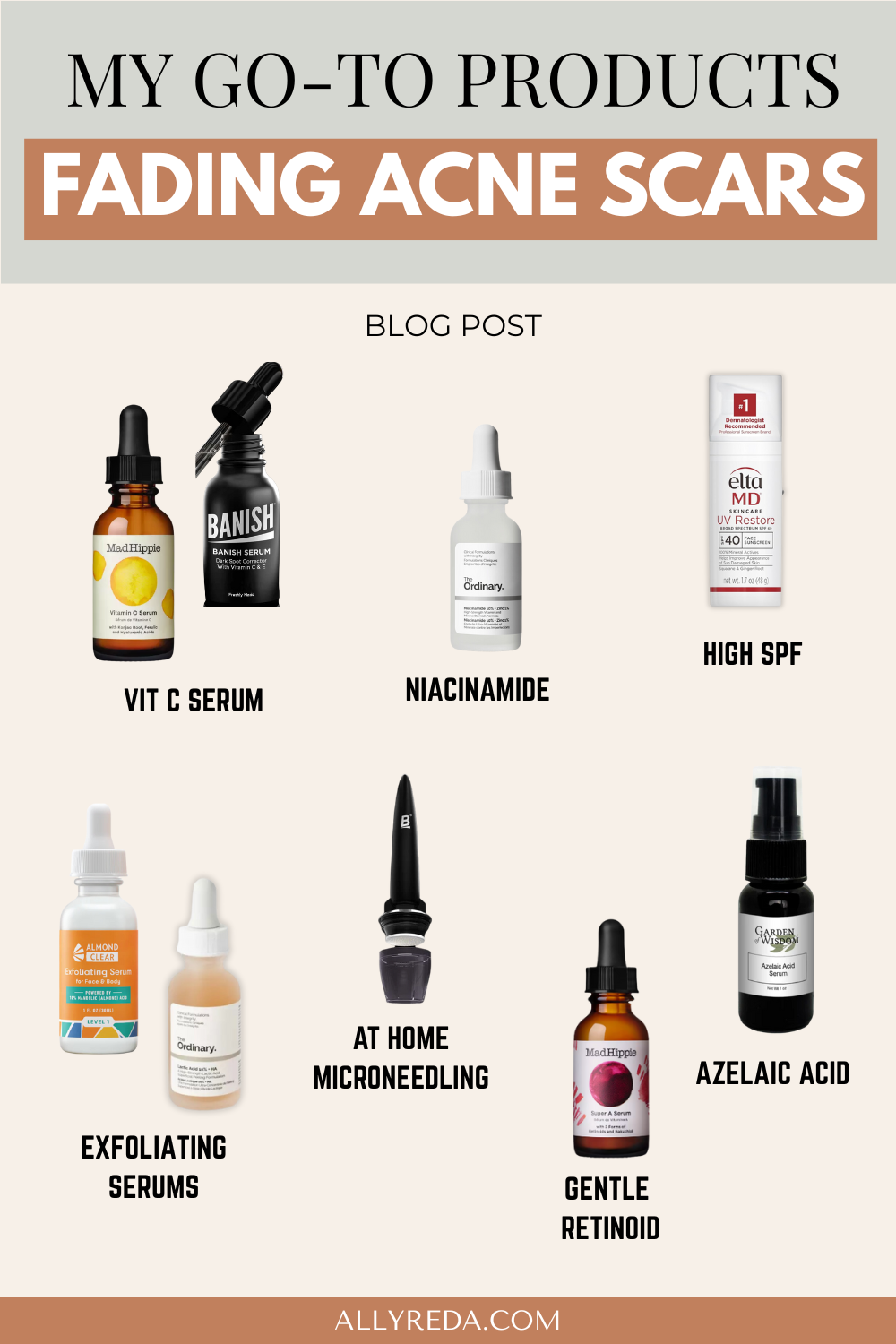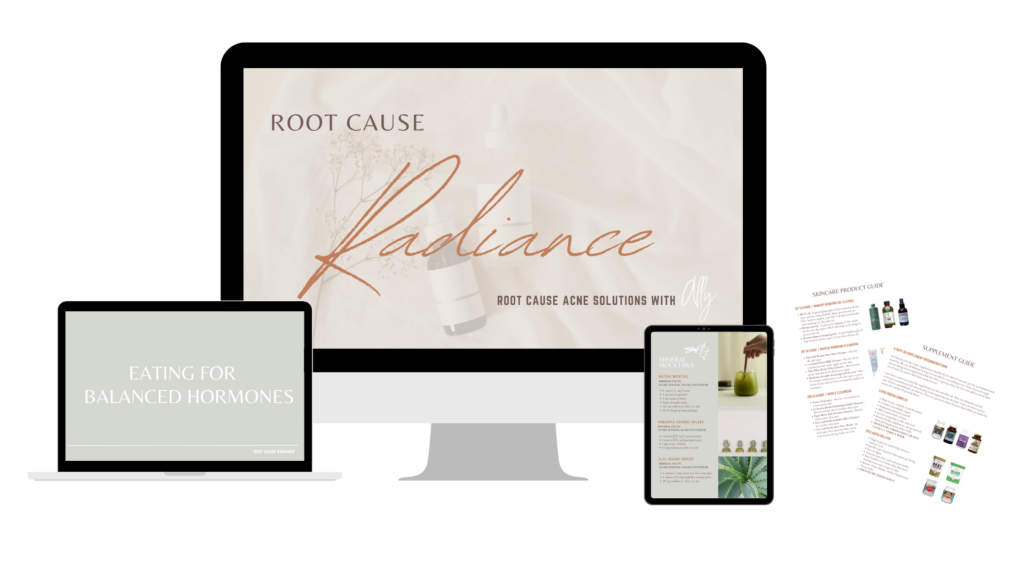The Blog
The Fastest Ways to Fade Acne Scarring Naturally

So, you’ve finally cleared your acne (heck yes!), but now you’re left with those stubborn reminders—dark spots, red marks, uneven texture. Ugh. Scarring and hyperpigmentation can feel like the never-ending sequel no one asked for.
But here’s the good news: fading acne scars isn’t just possible, it’s actually pretty straightforward when you follow the right steps in the right order. No scrubbing your face raw. No throwing 10 products at your skin and hoping for the best.
Let’s break it down.
First, Know What You’re Dealing With: PIE vs. PIH
Before you reach for any serums or start DIY’ing your way to better skin, you need to know what kind of post-acne scarring you’re dealing with.
PIE (Post-Inflammatory Erythema) = red or pink scars caused by dilated blood vessels and inflammation. More common on lighter skin tones.
PIH (Post-Inflammatory Hyperpigmentation) = brown or dark spots caused by excess melanin production. More common on deeper skin tones.
Why Knowing Your Scar Type Matters (And Why Random Treatments Don’t Work)
Each type responds better to different ingredients. That’s why random treatments don’t always work.
Inside the Root Cause Radiance course, we break this down step-by-step in the “Heal Scarring & Hyperpigmentation” lesson so you know exactly what to do based on your skin type, tone, and symptoms.

Let’s Talk Game Plan
1. Wear Sunscreen (Every. Single. Day.)
Yes, even indoors. Yes, even when it’s cloudy. SPF is non-negotiable.
UV exposure deepens hyperpigmentation and makes scars stick around way longer. It can also damage new healing skin. So if you’re not wearing sunscreen, you’re basically undoing all your progress.
elta MD is my go-to for acne scarring because it’s a higher strength SPF compared to most face sunscreens. I would even apply twice a day if you can remember!
2. Use a Targeted Serum in the Morning
Once your active breakouts are calm, it’s time to fade those spots.
- Vitamin C: Brightens, protects, and boosts collagen (bye, rough texture!).
Bonus tip: Look for a Vitamin C that also has Vitamin E and Ferulic Acid for extra punch, like Banish. Mad Hippie is another more budget-friendly fav.
3. Gently Exfoliate—But Don’t Overdo It
Exfoliating helps speed up cell turnover, so fresh, healthy skin can come through. But this is where many people go overboard.
Stick with gentle AHAs like:
- Mandelic acid (great for sensitive or acne-prone skin)
- Lactic acid (good for dry skin and PIH)
- Glycolic acid (for more stubborn spots, if your skin can handle it)
Do NOT: Double exfoliate (like using a scrub + acid in one routine) or exfoliate every day.
In The Ultimate Acne Skincare Guide Phase 3, you’ll learn how to rotate exfoliants smartly, based on your skin’s needs, not just hype.
4. Add Niacinamide to Your Routine
Niacinamide helps:
- Fades hyperpigmentation
- Strengthens the skin barrier
- Calms inflammation
- Helps with oil control + pore size
It’s kind of the “do-it-all” friend every skincare routine needs.
For oily/combination skin, niacinamide is a Phase 2 go-to in RCR. If you’re drier, a skin barrier serum might be a better pick early on.
5. Consider an Exfoliating Mask or Treatment Serum (Evenings Only)
Once you’re deep into Phase 3 and your skin is ready, you can begin rotating in more intensive treatments:
- AHA exfoliating mask 1-2x per week
- Azelaic acid (brightens and calms)
- Oleic acid or Kojic acid (melanin-blockers for PIH)
- Antioxidant serums to protect and brighten
This is where you’ll really start to see magic happen. The key? Go slow, rotate smart, and listen to your skin.
6. Try Retinoids (Only If Your Skin Loves Them)
Retinoids boost cell turnover, stimulate collagen, and help smooth acne scars. But they’re not for everyone, especially if your skin is dry, reactive, or still healing.
If you do add a retinoid:
- Start slow (2x a week)
- Always wear SPF (no excuses)
- Only apply in the evening
- If that still feels like too much, you could add it as a last step after moisturizer.
Inside RCR, you’ll find a list of gentle, beginner-friendly retinoids that work without trashing your skin barrier.
7. Explore At-Home Microneedling (When You’re Ready)
Microneedling can be super effective for fading both PIE + PIH by boosting collagen production and speeding up skin healing. Just be sure to:
- Use a quality device (like the Banish 2.0)
- Follow instructions carefully
- Avoid if your skin is sensitive, inflamed, or still breaking out
P.S. If you have deep scarring like ice pick or boxcar scars, professional treatments are usually needed.
Final Thoughts
Clear skin isn’t just about the right products. It’s about knowing when and how to use them—and supporting your body from the inside out.
Inside the Root Cause Radiance course, you’ll get a proven 4-pillar approach to healing acne and scarring, with full product guides, step-by-step lessons, and expert support.
No more Googling. No more guesswork. Just real results.
Rooting for you always,
Ally
Be the first to comment